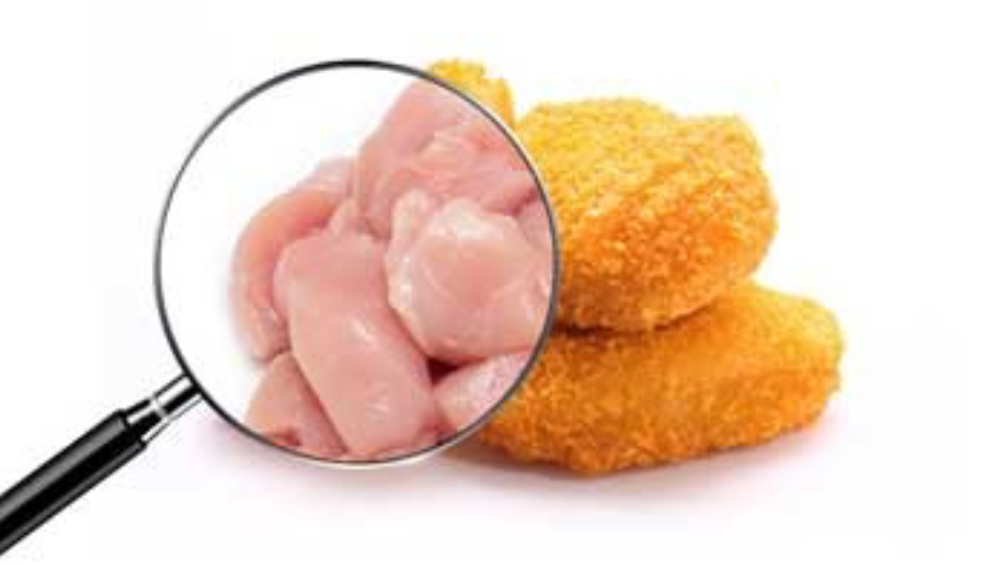— OPINION —
Today (April 25), the USDA proposed a new food safety rule that could revolutionize the American poultry industry. The rule will affect just a sliver of products — breaded and stuffed raw chicken products. But despite its narrow scope, the rule represents a sea change in how USDA inspects poultry, one that could end up sparing millions of consumers from suffering a foodborne illness.
Chicken makes a lot of people sick, more than any other category of food products. This dubious distinction partly reflects the fact that Americans eat a lot of chicken, with chicken pulling ahead of beef as the country’s most popular protein in 2010. But the USDA inspection system deserves a good chunk of the blame as well.
For years, consumer groups like mine have cried foul over the disconnect between how USDA protects consumers from “adulterants” like E. coli O157:H7 in beef, versus what it does about pathogens in chicken, particularly Salmonella. Salmonella contaminates about 1 in every 25 packages of chicken at the grocery store. The current rules do not stop a company from knowingly selling chicken contaminated with even high levels of the most virulent, antibiotic resistant Salmonella, so long as weekly testing at the plant does not reveal too many positive samples.
This “performance standard” system has failed to effectively manage foodborne illness risk from chicken. There are a couple big reasons. For one, the amount of Salmonella bacteria on a piece of food is a big factor in how dangerous that food is. USDA sampling may detect low levels of Salmonella contamination on lots of samples at a company, but the company that causes the outbreak may be the one that fails to prevent just a few batches of heavily contaminated chicken from going out the door.
Another big reason is that not all Salmonella are created equal. The most prevalent strain, or serotype, of the bacteria in chicken is Salmonella Kentucky. It rarely makes people sick. But Salmonella Kentucky causes chicken companies to fail the performance standards, and so they have developed vaccines against this relatively innocuous bacterium. Ironically, while vaccines that knock out Salmonella Kentucky make the inspection process go more smoothly, they make chicken less safe because other, more dangerous Salmonella strains are more likely to colonize the vaccinated birds. In other words, USDA poultry inspection rules are causing companies to spend money to make food less safe.
Today’s rule marks an important step towards aligning poultry inspection with public health. It is the first time that USDA has considered Salmonella to be an adulterant in a raw chicken product. Rather than regulating company “performance,” the rule introduces a “product standard.” If some frozen chicken cordon bleu harbors more than one colony forming unit (CFU) of Salmonella per gram, USDA will force a recall. For these products at least, the USDA mark of inspection will really mean something.
Breaded and stuffed raw chicken products present a low hanging fruit for food safety regulators. Because these products appear to be cooked, many consumers mishandle them, despite labels that feature pictures of crossed out microwaves and the words “raw” in bright yellow script. After the Canadian government adopted a similar policy for these products in 2019, Salmonella infections dropped 16%, an astounding result given what a tiny share of the retail poultry market these products represent. The grim track record of outbreaks linked to raw breaded poultry products in the U.S. suggests that USDA’s proposal may produce similar public health gains. Still, at least one industry trade group has balked, suggesting that USDA’s proposal is “not science-based.” This resistance speaks volumes about the potential for what may come.
Eventually, USDA could, and should, adopt product standards for Salmonella in other raw poultry products. In fact, a coalition of leading poultry companies, consumer advocates, and food safety experts have come together in support of enforceable product standards for poultry. But the road to reform will be rough. Meeting product standards will require significant investments in the poultry production chain, all the way up to the two companies that produce almost all of the breeding stock for the industry, where some of the nastiest Salmonella strains in recent memory appear to have originated. The cost of these investments will likely pale in comparison to the cost of Salmonella illness caused by poultry now. However, the industry can now externalize those costs on to consumers, who are rarely able to connect the dots and discern the cause of a foodborne illness. Consider that for every reported Salmonella infection, another 29 are estimated to go unreported.
Consumer health should not subsidize any industry. Enforceable product standards like the ones proposed today can significantly reduce the 1.35 million estimated Salmonella infections that Americans suffer each year. And they can do so in a highly cost-effective manner. Secretary Vilsack and the staff at USDA deserve credit for taking action, and they deserve public support for going further.
(To sign up for a free subscription to Food Safety News,click here)

